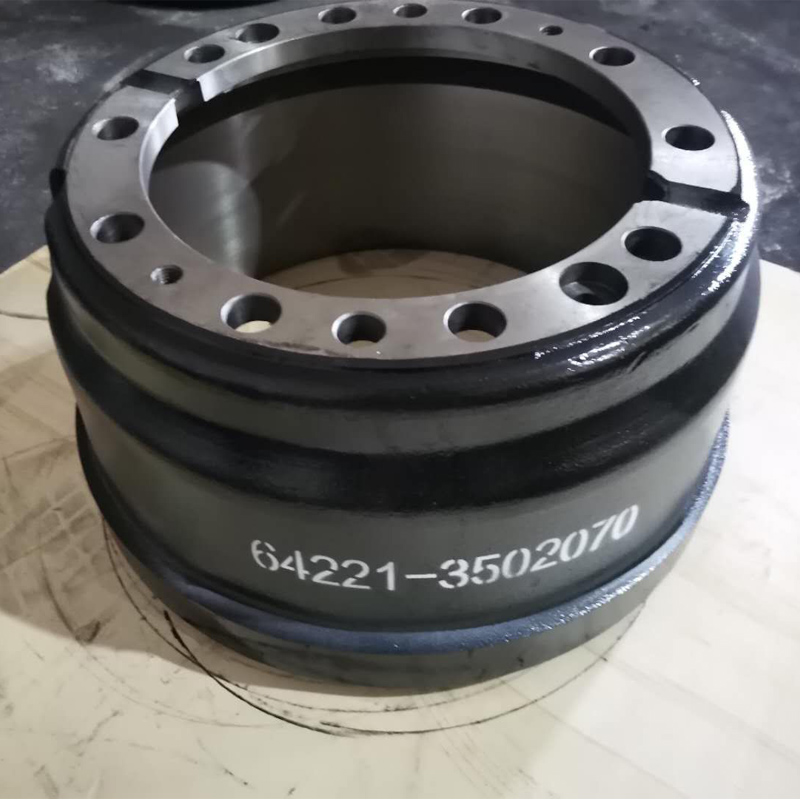Oct . 19, 2024 00:27 Back to list
Brake Drum Fluid Leak Causes and Solutions for Effective Repair and Maintenance
Understanding Rear Brake Drum Fluid Leaks Causes, Symptoms, and Solutions
Braking systems are crucial for the safe operation of any vehicle, and rear brake drum systems are no exception. While they are often overshadowed by their disc counterparts, brake drums serve an essential purpose. One common issue that can arise with rear brake drum systems is fluid leakage. In this article, we will explore the causes, symptoms, and solutions related to rear brake drum fluid leaks.
The Importance of the Brake System
Before delving into the particulars of fluid leaks, it’s important to understand the role of the brake system in a vehicle. The brake system converts kinetic energy into thermal energy through friction, allowing the vehicle to slow down or come to a stop. The rear brake drum typically contains two shoes that press against the inside of the drum when the brakes are applied. This process generates the necessary friction for stopping.
Causes of Fluid Leaks
1. Worn or Damaged Seals Brake systems contain various seals that are crucial for maintaining fluid integrity. Over time, these seals can wear out due to environmental factors such as heat, moisture, and contaminants. A damaged or worn seal can lead to fluid escaping from the system.
2. Brake Cylinder Failure The wheel cylinder is responsible for pushing the brake shoes against the drum. If the cylinder starts to fail, it can develop internal leaks that allow brake fluid to escape. Signs of cylinder failure often include a spongy brake pedal or a pedal that goes to the floor.
3. Corrosion and Rust Brake drums are made from metal, which can corrode or rust over time. If this corrosion occurs in areas where seals or fittings are present, it can lead to leaks. Moisture accumulation can exacerbate this issue, especially in regions with high humidity.
4. Overfilled Brake Fluid Reservoir An overfilled brake fluid reservoir can lead to excess pressure in the brake lines, which may cause fluid to leak out of connections and seals. It’s important to always check the fluid level and maintain it within the recommended range.
5. Poor Installation If the brake shoes, drums, or other components were not installed correctly, it could lead to misalignment and eventual leaking. Proper installation is vital for ensuring that components function as designed.
Symptoms of a Fluid Leak
Recognizing a fluid leak in the rear brake drum system is crucial for timely repairs
. Some key symptoms includerear brake drum leaking fluid

- Fluid Spots on the Ground The most obvious sign of a leak is finding fluid spots beneath the vehicle. Brake fluid is typically light brown or clear and has a distinct odor.
- Spongy or Soft Brake Pedal If you notice that the brake pedal feels spongy or sinks to the floor when pressed, this could indicate a fluid leak affecting hydraulic pressure.
- Increased Stopping Distance A leaking brake system may not operate at full efficiency, causing longer stopping distances. This can be particularly dangerous during emergency stops.
- Warning Light Many vehicles come equipped with a brake system warning light on the dashboard. If you see this light illuminated, it’s essential to investigate the issue further.
Solutions to Address Fluid Leaks
1. Inspect and Replace Seals If worn or damaged seals are identified, they should be replaced promptly. Regular inspections can help prevent leaks from occurring.
2. Cylinder Replacement In cases where the wheel cylinder is failing, replacing it is often necessary. This should be done by a qualified mechanic to ensure proper installation.
3. Repair Corrosion Damage Addressing rust and corrosion can prolong the life of brake components. Sanding down affected areas and applying protective coatings may be beneficial.
4. Proper Fluid Maintenance Always check the brake fluid level and maintain it within the manufacturer’s recommended range. Regularly changing the fluid can also enhance system performance.
5. Professional Evaluation If you're unsure about the cause of a fluid leak, it’s advisable to seek a professional evaluation. A trained mechanic can diagnose the problem and recommend the appropriate course of action.
Conclusion
Fluid leaks in rear brake drum systems can pose a significant safety risk and should be addressed promptly. Understanding the causes and symptoms, as well as implementing effective solutions, can ensure your vehicle remains safe and operational. Regular maintenance and inspections are key to preventing issues that could lead to more severe brake system failures. Always prioritize safety by keeping your braking system in optimal condition.
-
High-Quality Brake Drum Iveco - Durable Drum Brake Drum & Brake Shoe Solutions
NewsJul.05,2025
-
High-Quality Brake Drum MAZ – Durable Drum Brake Drum & Brake Drum and Brake Shoe Solutions
NewsJul.04,2025
-
Brake Drum Man - High-Quality Drum Brake Drums & Brake Shoes for Reliable Performance
NewsJun.24,2025
-
High-Quality Brake Drum Kamaz – Durable Drum Brake Drum & Brake Shoe Replacement
NewsJun.10,2025
-
High-Quality Brake Drum Liza for Drum Brake Systems - Superior Durability and Performance
NewsJun.10,2025
-
High-Quality Brake Drum Kamaz – Durable Drum Brake Drum & Brake Shoe Solutions
NewsJun.10,2025
